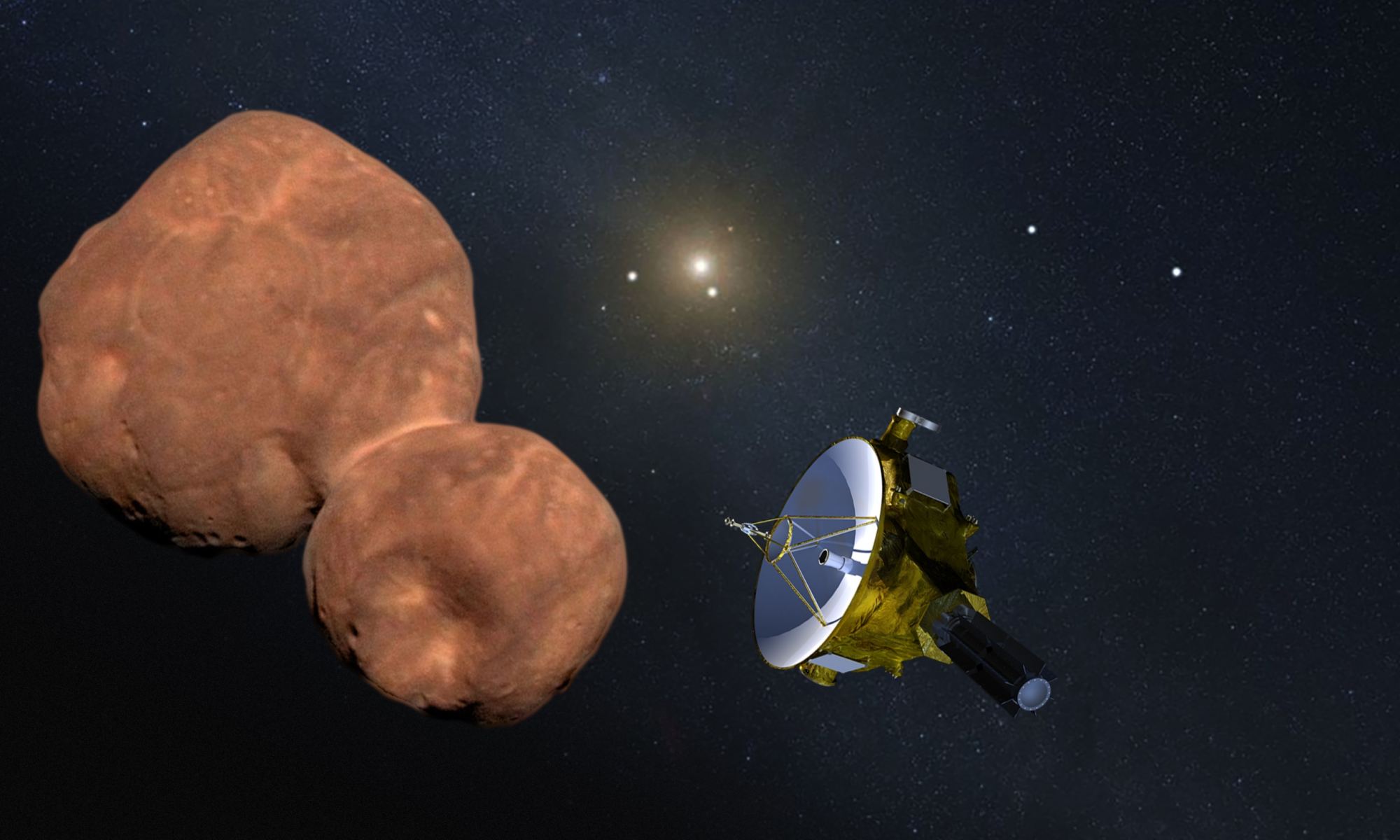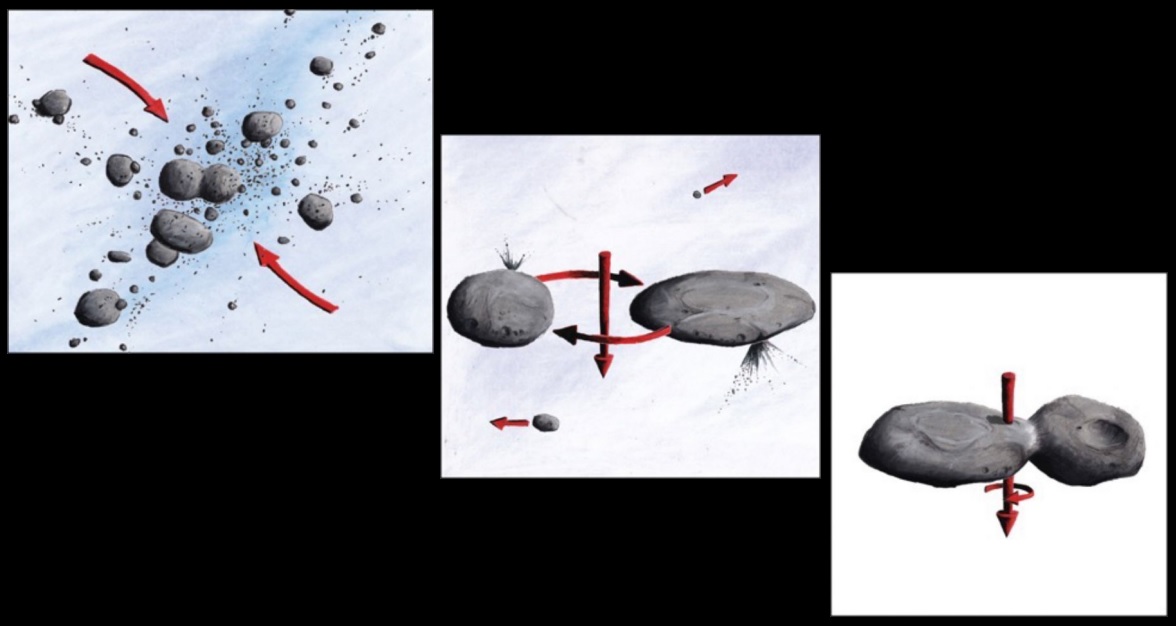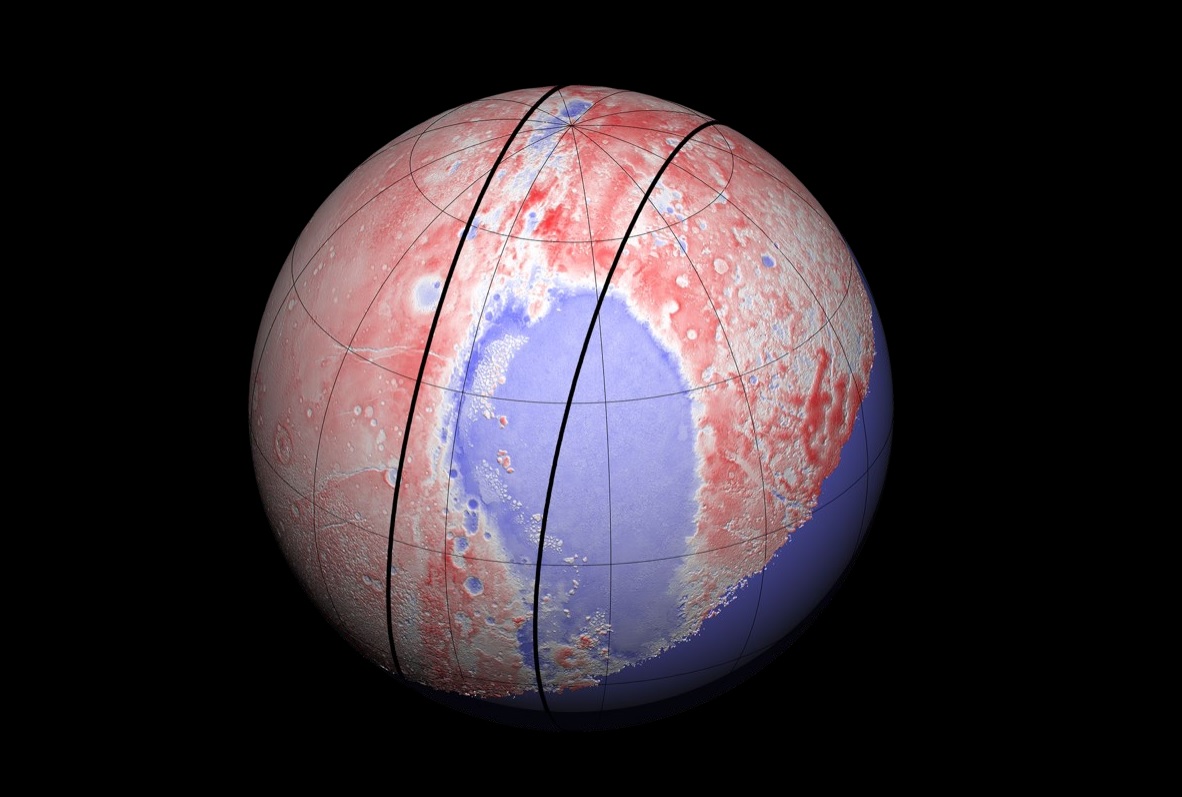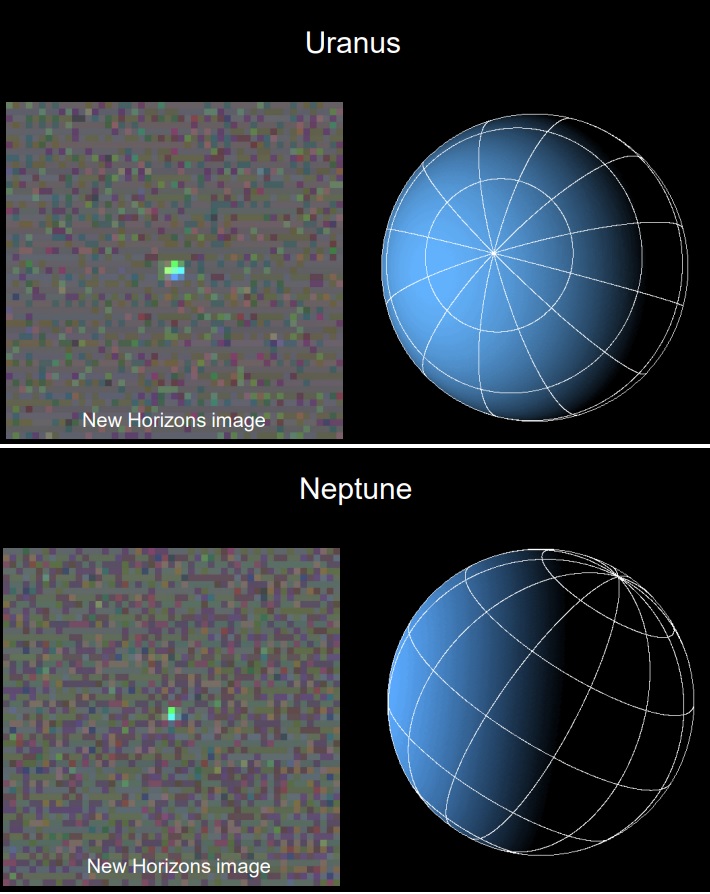Almost eight years after its historic flyby of Pluto, NASA’s New Horizons probe is preparing for another round of observations on the icy edge of the Solar System. This time, the field of view will vary from Uranus and Neptune to the distant cosmic background outside our Galaxy. During the scientific conference on the study of the Moon and planets in Woodlands, Texas, scientists from the New Horizons team shared their latest discoveries and made a preliminary overview of what we would be waiting for.
17 years passed since the New Horizons spacecraft was launched to Pluto and the Kuiper Belt. The main mission reached its peak in 2015, when the probe flew past Pluto. But the mission did not end there and the space accident moved to the second stage. On its way, New Horizons met the trans-Neptunian object 486,958 Arrokoth in 2019.
Flying past the Arrokoth

Alan Stern, a planetary scientist from the Southwest Research Institute, said that after a detailed study of the structure of the Arrokoth, he and his team learned information about the early days of the Solar System thanks to this object.
“Because this object orbits so far from the Sun, it has always been in deep freeze. At such a distance, it received weak ultraviolet radiation, and also experienced less collisions. And that’s why Arrokoth is very primitive, because it has hardly evolved over all these billions of years,” Stern explained.

Stern and his colleagues noted that the Arrokoth was created from two rough pieces of icy material, as if a pile of snowballs had been glued together to form a large whole. This object is a very important clue about how planetesimals form in the outer Solar System, perhaps even in the inner Solar System.
New facts about Pluto
Planetary scientists have received new information about Pluto. It turned out that its axis of rotation acquired a significant slope at the beginning of its history. And this led to a shift in the latitudes and longitudes of the surface elements.
“Pluto has actually flipped to the side. But, most interestingly, its axis of rotation has moved hundreds, if not thousands of kilometers during its existence. Therefore, its polar regions were constantly changing,” said Oliver White, a New Horizons co-researcher at the SETI Institute.

However, the fact that Pluto has changed its orientation in the past shows that none of the localities that scientists see are in their original place. White’s team also found that Pluto’s subsurface ocean probably gave a certain boost to the planet and helped shift the bulk of its mass to the equator.
“We see signs of ancient landscapes formed in places and in ways that we cannot explain in the current orientation of Pluto. We assumed that they formed when Pluto was differently oriented in its early history, and then they were moved to their current location as a result of a real polar walk,” White added.
Pluto’s Icy Blades
In addition to helping scientists study Pluto’s ancient landscapes, New Horizons data provides clues about its newest features. Earlier, the spacecraft noticed huge deposits of methane near the equator of Pluto, many of which are as tall as the skyscrapers of the Earth. On Tuesday, scientists announced that they had new evidence that these knife-shaped landforms also extended to the far side of Pluto — beyond what New Horizons managed to see during its flyby in 2015.

On Earth, such penitentes are called the pillars. They are made of water ice and extend only a few meters. On Pluto, however, these features mostly exist at the highest points of its surface and reach hundreds of meters. At such altitudes, methane freezes out of Pluto’s thin atmosphere in cold weather and evaporates back into a gaseous state during warm periods.
The team of authors of the latest study used images taken by the Long Range Reconnaissance Imager (LORRI) on board New Horizons, and studied how light reflected from surfaces changed at different viewing angles. They found similar features of methane absorption on the far side of Pluto due to the fact that the surfaces were more rough than others,” Mishra said during his presentation. Such “bladed” terrain is probably one of the most common landforms on Pluto, he says.
Uranus and Neptune
The scientists also announced that future New Horizons observations will include color images of Uranus and Neptune. From its convenient vantage point in the Kuiper Belt, the spacecraft will have the best angle for observations that can only be carried out by spacecraft far beyond the orbits of Uranus and Neptune. Spacecraft inside the Solar System can only see the light reflected from the ice giants inside or from their sides facing the Earth. New Horizons, however, will be able to collect data on light scattered from the other side of the planet.

Unlike the first images obtained in 2019, future observations will be made during the rotation of the planets. The new photos will help researchers better understand how cloud structures evolve on two ice giants.
On June 1, 2022, scientists put New Horizons into sleep mode to save fuel. The spacecraft woke up after a 10-month “hibernation” on March 1, 2023. From the third week of April, scientists expect that New Horizons will begin studying objects of the far Kuiper belt, as well as two outer gas giants.
Earlier we reported on where the most distant spacecraft were located.
Follow us on Twitter to get the most interesting space news in time
https://twitter.com/ust_magazine

